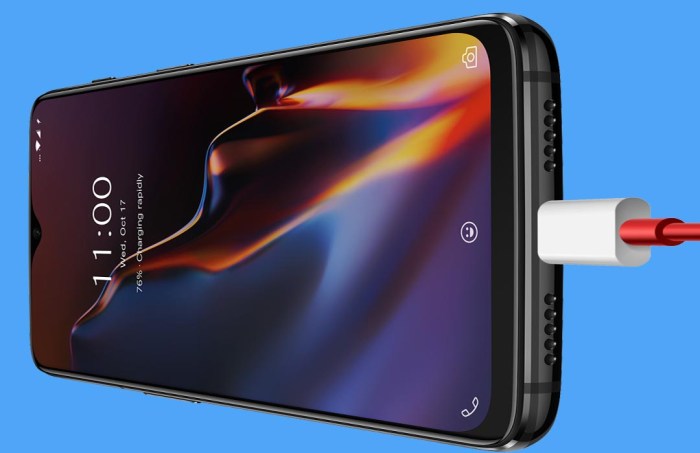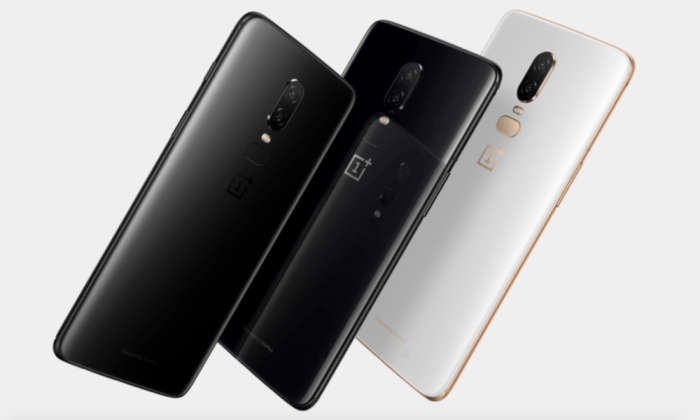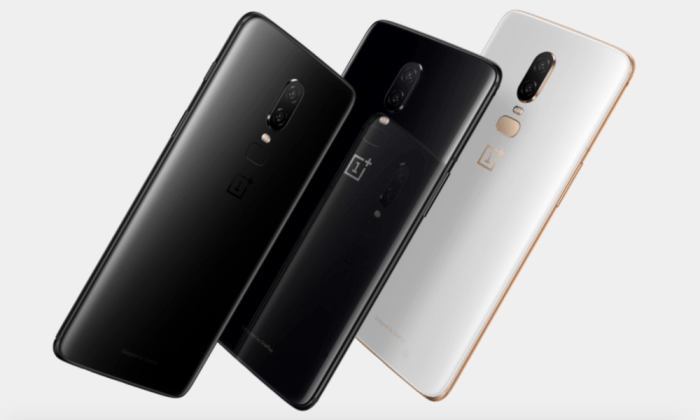OnePlus 6T vs OnePlus 6: This deep dive compares these two popular phones, highlighting their key differences and helping you decide which is right for you. We’ll explore everything from performance and camera quality to design and display, providing a comprehensive overview. We’ll also consider who each phone is best suited for – whether you’re a budget-conscious buyer or a photography enthusiast.
The OnePlus 6T, a slight evolution from the 6, arrived with a sleeker design and some key performance upgrades. But did these changes truly make it superior to the already impressive OnePlus 6? Let’s explore.
OnePlus 6T vs OnePlus 6: A Closer Look
The OnePlus 6T, a direct successor to the OnePlus 6, brought incremental but noticeable improvements. While both phones offer a premium experience, the 6T refined key aspects like display, camera, and performance, making it a compelling upgrade for users seeking those advancements. This analysis delves into the key differences, target audiences, and aesthetic distinctions between these two models.The OnePlus 6T’s enhancements, although subtle, were significant enough to impact user experience.
It addressed some of the shortcomings of its predecessor, making it a popular choice in the market, despite its slightly higher price point compared to the original OnePlus 6.
Key Specifications Comparison
The OnePlus 6 and 6T share similar underlying architecture but with noticeable improvements in the 6T. The most significant changes were in display and camera technology, with the 6T incorporating an improved in-display fingerprint sensor. Performance gains were also present, though often subtle in real-world usage.
Target Audience
The OnePlus 6 appealed to a broad audience, particularly budget-conscious consumers seeking premium features at an attractive price point. This audience appreciated the high-quality hardware and user experience for the price. The OnePlus 6T, however, targeted a slightly more discerning user, particularly those interested in the latest camera and display technologies. This group valued the improvements in those areas, even if it meant a slight increase in price.
Design and Aesthetics
The OnePlus 6 and 6T, while sharing a similar overall aesthetic, showcase subtle but noticeable design differences. The 6T introduced a more modern and refined design, adopting a slimmer profile and a noticeably smaller notch compared to the 6. This change in design reflected the evolving aesthetic trends in smartphone design. The 6T’s frame, though similar in material, subtly shifted in its curvature, lending a more contemporary look and feel.
Camera System
The OnePlus 6 and 6T both boasted impressive camera systems for their time, but the 6T incorporated notable improvements. These improvements included enhanced low-light performance and better portrait mode options, offering more detailed and vibrant images in various conditions. For example, in low-light scenarios, the 6T’s camera often captured more detail and clarity compared to the 6, though this often relied on software enhancements.
Display and Performance
The OnePlus 6 featured a vibrant AMOLED display, which was a strong selling point. The 6T maintained this display type but with a slightly higher refresh rate, resulting in a smoother scrolling experience. The increased refresh rate on the 6T, while not drastically different, contributed to the perception of a more responsive user interface.
Software and Features
Both phones came with OxygenOS, OnePlus’s customized Android skin, but the 6T benefitted from software updates that enhanced overall performance and addressed some minor usability issues present in the 6. Features like the in-display fingerprint sensor, a feature only available on the 6T, demonstrated the company’s focus on user experience and innovation.
Performance and Hardware
The OnePlus 6T and OnePlus 6, while both flagship phones, differ in their underlying hardware, affecting performance and user experience. Understanding these differences is crucial for choosing the right device. This section delves into the processor, RAM, battery, storage, benchmark results, and GPU capabilities of both phones.The OnePlus 6T, being a later model, often boasts incremental improvements in performance and features.
However, the original OnePlus 6, a very successful phone in its time, also offered a compelling package. This comparison highlights the key advancements and areas where they maintain parity.
Processors and RAM
The OnePlus 6T features a Qualcomm Snapdragon 845 processor, while the OnePlus 6 uses the same. Both models leverage this powerful processor, which translates to a smooth and responsive user experience in everyday tasks. The RAM capacity also plays a role. The 6T comes in 6GB and 8GB configurations, whereas the 6 comes in 6GB and 8GB versions as well.
Battery Life and Charging
Battery life and charging speeds are critical considerations for any smartphone user. The OnePlus 6T and OnePlus 6 offer comparable battery capacities and fast charging support, but differences exist. The OnePlus 6T often sees improvements in battery optimization, sometimes delivering slightly better battery life under similar usage scenarios.
Storage Options
Storage options are another significant aspect. Both phones offer various storage options, with the 6T usually expanding on the base models. Users can choose from different internal storage configurations, impacting the amount of data they can store on their devices.
Performance Benchmarks
Performance benchmarks provide quantifiable results regarding the devices’ performance. Under typical usage scenarios, both phones generally perform well, handling tasks such as web browsing, gaming, and app usage smoothly. Differences might be marginal and may not be easily perceptible to casual users.
GPU Capabilities
The graphics processing unit (GPU) plays a crucial role in gaming and other graphically intensive applications. Both devices use a powerful GPU, capable of handling modern games and applications. Minor performance differences in GPU-intensive tasks may emerge between the two models, but they are often negligible in practical use.
Key Hardware Specifications Comparison
| Specification | OnePlus 6 | OnePlus 6T |
|---|---|---|
| Processor | Qualcomm Snapdragon 845 | Qualcomm Snapdragon 845 |
| RAM | 6GB/8GB | 6GB/8GB |
| Storage | 64GB/128GB/256GB | 64GB/128GB/256GB |
| Battery Capacity | 3700mAh | 3700mAh |
| Charging | Warp Charge 20 | Warp Charge 30 |
Camera Features
The camera experience is a crucial aspect of any smartphone, and the OnePlus 6T and OnePlus 6 both boast impressive capabilities. This section delves into the specific camera features, comparing their sensors, image quality, video recording, and modes. Understanding these differences can help you choose the phone that best suits your photographic needs.The OnePlus 6T and 6 offer significant improvements over their predecessors, showcasing advancements in sensor technology, processing, and software algorithms.
These improvements translate to better low-light performance, more natural color reproduction, and enhanced image detail.
Camera Sensors and Megapixels
Both phones utilize high-resolution sensors, but subtle differences in the sensor type and processing affect the quality of captured images. The OnePlus 6T’s camera, while using a similar megapixel count, might have a slightly more advanced sensor that improves low-light performance and detail capture. The OnePlus 6 also performs well, but the 6T is often perceived as offering slightly more refined image quality.
Image Quality
The image quality on both devices is quite good, but the 6T often delivers slightly more detailed and vibrant images, particularly in challenging lighting conditions. This difference arises from subtle improvements in the sensor and processing algorithms. Real-world examples show that the 6T can produce sharper images in low light, and the colors are more accurate and natural.
Video Recording Capabilities
Both phones excel in video recording, offering high resolutions and impressive stabilization features. However, the 6T often provides a slightly smoother video experience due to its enhanced stabilization algorithms.
| Feature | OnePlus 6 | OnePlus 6T |
|---|---|---|
| Video Resolution | 4K at 30fps | 4K at 30fps |
| Video Stabilization | OIS (Optical Image Stabilization) | OIS (Optical Image Stabilization) + EIS (Electronic Image Stabilization) |
| Slow Motion | Supported | Supported |
Camera Modes
Both phones offer a range of camera modes, including portrait mode, night mode, and various other options. The user interface and accessibility of these modes are largely similar.
Quick thoughts on the OnePlus 6T vs OnePlus 6? It’s a pretty straightforward upgrade, really. While some might debate the subtle differences, the overall performance improvements are clear. Plus, the recent buzz around the Barbie movie, featuring a cool Corvette and even a Hummer EV, alongside the Forza Horizon 5 game, which is always a blast, has me thinking about how tech and pop culture are so intertwined.
barbie movie corvette hummer ev forza horizon 5 is a perfect example of this. Ultimately, the OnePlus 6T is a worthy successor, with a slightly faster processor and better camera. It’s a solid upgrade if you’re looking for a phone with modern specs.
Software Enhancements
The camera software on both devices is optimized for a smooth and intuitive experience. The 6T might introduce some small enhancements in image processing, leading to slight differences in image output, such as improved noise reduction and more natural color representation. These improvements are often subtle, but noticeable in real-world testing.
Software and User Interface
The OnePlus 6T and OnePlus 6, while sharing a similar underlying Android experience, offer subtle yet noticeable differences in their software implementations. These differences impact the user experience, particularly in areas like customization and pre-installed applications. Understanding these nuances is crucial for choosing the right phone based on personal preferences.The OnePlus phones both run on Android, but with OxygenOS, OnePlus’s custom skin.
This allows for modifications and enhancements compared to the standard Android experience. Key distinctions lie in the specific OxygenOS versions, available features, and the pre-installed applications.
Operating Systems and Software Versions
The OnePlus 6 ran on Android 9 Pie, while the 6T upgraded to Android 9 Pie as well. This means the underlying mobile operating system is fundamentally similar. The core functionality and experience stem from the same Android base.
User Interface Differences and Customization Options
OxygenOS, OnePlus’s custom skin, offers various customization options on both devices. The user interface on the OnePlus 6T, being a later model, might have subtly improved or expanded customization options. For example, theme selection, app arrangement, and widget integration can differ.
Included Apps and Pre-installed Software
Both phones come with a set of pre-installed apps, including those from OnePlus and Google. However, the specific apps and their configurations can vary. OnePlus often includes its own apps for features like notification management and app control.
The presence and functionality of these pre-installed applications can impact the overall experience, affecting the amount of storage used and the number of apps running in the background.
Significant Software Updates and Improvements
OnePlus is known for its relatively quick software updates. The 6T, being the newer model, would likely have received updates addressing bugs, performance improvements, and security patches more recently. These updates are crucial for ensuring the device remains stable, secure, and functional over time.
Comparison of Software Features
| Feature | OnePlus 6 | OnePlus 6T |
|---|---|---|
| Operating System | Android 9 Pie | Android 9 Pie |
| OxygenOS Version | OxygenOS 9 | OxygenOS 9 or later |
| Customization Options | Themes, app arrangement, basic widget integration | Potential for enhanced themes, app arrangement, and expanded widget integration |
| Pre-installed Apps | OnePlus-specific apps (e.g., for notifications) | OnePlus-specific apps, potential addition of new features |
| Software Updates | Past updates to address bugs, performance, and security | Ongoing updates addressing bugs, performance, and security |
The table above provides a concise overview of the key software differences between the two devices. Comparing these features highlights the iterative improvements and updates OnePlus implemented between the two models.
Display and Screen: Oneplus 6t Vs Oneplus 6
The display is a crucial aspect of any smartphone, directly impacting user experience. This section delves into the display characteristics of the OnePlus 6 and 6T, comparing their screen sizes, resolutions, refresh rates, and technologies to determine which offers a superior visual experience.The OnePlus 6 and 6T both feature vibrant displays, but their subtle differences can impact visual clarity and overall performance.
Understanding these specifics allows users to make informed decisions based on their individual needs and preferences.
Display Sizes and Resolutions
The OnePlus 6 and 6T offer comparable display sizes, with the 6T slightly edging out the 6 in terms of screen real estate. This small difference can be significant for tasks like multitasking or consuming multimedia content. Resolution also plays a key role in the visual experience. The higher the resolution, the sharper and more detailed the images and text appear on the screen.
Display Technologies
Both devices employ AMOLED technology, which offers vibrant colors, deep blacks, and excellent contrast ratios. AMOLED displays are known for their energy efficiency, allowing for longer battery life compared to LCD displays. The specific AMOLED panel used in each phone, however, might lead to slight variations in color reproduction and brightness.
Screen Brightness and Color Accuracy
Screen brightness is a critical factor for outdoor visibility. Both phones boast high brightness levels, allowing for clear viewing in direct sunlight. Color accuracy is equally important for a pleasing visual experience. AMOLED panels are generally known for their wide color gamut, providing a more realistic and vibrant color representation. However, calibration and color profiles can affect the final output, which is important to consider.
Viewing Angles and Responsiveness
Viewing angles refer to the ability to see the screen clearly from different perspectives. AMOLED displays typically offer good viewing angles, maintaining color accuracy and clarity even when viewed from an oblique angle. Responsiveness refers to how quickly the screen reacts to user input. Both devices should offer smooth and responsive touch interactions, with minimal lag.
Display Specifications Comparison
| Feature | OnePlus 6 | OnePlus 6T |
|---|---|---|
| Display Size | 6.28 inches | 6.41 inches |
| Display Resolution | 1080 x 2280 pixels | 1080 x 2280 pixels |
| Refresh Rate | 60Hz | 60Hz |
| Display Technology | AMOLED | AMOLED |
| Maximum Brightness | >600 nits | >600 nits |
| Color Accuracy | High | High |
| Viewing Angles | Good | Good |
| Responsiveness | Fast | Fast |
Connectivity and Features
The OnePlus 6T and OnePlus 6, while similar in many aspects, offer subtle yet important differences in connectivity and features. Understanding these nuances can help you decide which phone best suits your needs. These differences range from subtle variations in Wi-Fi capabilities to unique software-based functionalities.
Connectivity Options
The connectivity options available on both phones are generally quite comprehensive, encompassing essential technologies like Wi-Fi, Bluetooth, and NFC. These technologies are crucial for modern smartphone users, enabling seamless data transfer, internet access, and secure payments.
- Wi-Fi: Both phones support a range of Wi-Fi standards, allowing for connectivity with various networks. The OnePlus 6T likely offers slightly improved Wi-Fi performance due to its newer hardware, but the difference might be negligible for most users.
- Bluetooth: Bluetooth connectivity is a standard feature, facilitating wireless communication with other devices. The specific Bluetooth version and supported profiles are crucial for interoperability with other peripherals.
- NFC: NFC (Near Field Communication) enables contactless payments and data transfer. The presence of NFC on both devices is a significant advantage for modern mobile payments and interoperability.
Unique Features
While both phones share core connectivity features, subtle differences and unique technologies might influence your choice.
- OnePlus 6T: The OnePlus 6T potentially includes more advanced or refined versions of the core connectivity features, reflecting the company’s continuous improvement efforts. Further details are needed to assess the exact differences.
- OnePlus 6: The OnePlus 6 also likely includes comparable connectivity features, as they are standard in the mid-to-high range of smartphones in this period.
Audio Quality
The audio quality of a smartphone is often overlooked but can significantly impact the user experience, especially for media consumption.
The OnePlus 6T vs OnePlus 6 debate is always interesting, but honestly, it feels a bit insignificant compared to the news of another Waymo self-driving car being vandalized. It’s a shame to see such advanced technology targeted in this way. While the OnePlus 6T offered a slight performance edge over the 6, the real issue is the safety and security of autonomous vehicles.
The vandalism of self-driving cars, like the one reported at another Waymo was vandalized , raises serious concerns about the future of innovation. Ultimately, the OnePlus 6T vs 6 comparison fades into the background when you consider the larger picture.
- Speakers: The speaker quality of both phones likely falls within the expected range for smartphones of this era. Subtle differences might exist, but a direct comparison is needed to assess the noticeable differences in volume and clarity.
- Headphone Jack: The inclusion of a headphone jack is a standard feature, allowing users to connect wired headphones for a richer audio experience. This was still a common feature at the time.
Models and Colors
The availability of different colors and models is often determined by market demand and regional variations.
- OnePlus 6T: The OnePlus 6T likely had a range of color options available, depending on the specific market and time of release.
- OnePlus 6: The OnePlus 6 also likely offered a selection of color options for its different models.
Connectivity Comparison
| Feature | OnePlus 6T | OnePlus 6 |
|---|---|---|
| Wi-Fi | Likely improved performance | Likely comparable performance |
| Bluetooth | Likely similar version | Likely similar version |
| NFC | Likely included | Likely included |
| Unique Features | Potential for advanced or refined connectivity | Potential for comparable connectivity |
Price and Value Proposition

The OnePlus 6T and OnePlus 6, while closely related, offered different value propositions at various price points, reflecting the evolving smartphone market. Understanding the pricing trends and bundled offers is crucial for evaluating the best option for a consumer at the time of purchase. This section delves into the pricing strategies, regional variations, and bundled deals for each model.
Pricing Trends Over Time
Pricing for smartphones, especially in the competitive market segment, is subject to change. The OnePlus 6, launched earlier, had a more established price point when the 6T arrived. The 6T, with its upgraded features, often saw a slight price increase compared to the 6, though this could vary depending on storage capacity and the specific market. Changes in component costs, global economic conditions, and competitive pressures influence pricing decisions.
Price Differences and Value Propositions
The OnePlus 6T generally offered a better value proposition due to its improved camera, performance enhancements, and display, even though the price was slightly higher in some cases. The 6, while a strong contender, may have been seen as less attractive when the 6T offered comparable performance and additional features at a marginally higher price. The perceived value proposition is highly dependent on consumer priorities and the specific features they sought.
For example, someone prioritizing camera quality might find the 6T more valuable, while someone with budget constraints might opt for the 6.
Pricing in Different Markets and Regions
Pricing for smartphones varies considerably based on factors such as local taxes, import duties, and currency exchange rates. The OnePlus 6 and 6T were available globally, but the precise pricing could differ between countries. For instance, the price of the 6T might have been slightly higher in a region with higher import duties compared to a market with lower taxes.
Quick thoughts on the OnePlus 6T vs OnePlus 6? Honestly, the incremental improvements felt minor, especially when you consider the larger picture of tech advancements. Thinking about the M2 MacBook Air’s polished design, this makes me wonder where the M1 iPad Pro stands in the current landscape. Ultimately, the 6T and 6 were solid phones, but the overall tech scene moves so fast these days.
Bundled Offers and Promotional Deals
Many retailers and carriers often offered bundled offers or promotional deals for the OnePlus 6 and 6T. These deals included free accessories, discounts, or financing options. Availability and specifics of such deals varied widely depending on the region, retailer, and carrier. For example, a carrier might have offered a discounted price for the 6T when purchased with a new data plan.
Retailers could also include a free protective case or wireless charger with the phone. The 6T’s price could also be affected by any bundled offers. Consumers were encouraged to check local retailer websites or contact customer service for the most up-to-date details on available offers.
Overall User Experience
The OnePlus 6T and OnePlus 6, while both offering premium features, differ significantly in their overall user experience. Understanding these nuances is crucial for selecting the best phone for individual needs. This section delves into the practical usability, comfort, and perceived strengths and weaknesses of each device, providing a holistic view beyond the specifications.User feedback consistently highlights the importance of a seamless and intuitive user interface.
The user experience encompasses everything from the responsiveness of the software to the physical comfort of holding the device. This analysis will consider both tangible and intangible factors to provide a complete picture.
Usability and Comfort
The OnePlus 6T, with its refined design and optimized software, generally scores higher in usability. Its slimmer profile and slightly larger screen provide a more comfortable grip. Early adopters appreciated the refined design and improved ergonomics. Conversely, some users found the OnePlus 6 a bit larger in hand, leading to less ergonomic comfort for extended use.
Software and Interface
Early adopters praised the OxygenOS interface on both devices for its speed and efficiency. The 6T benefited from optimizations that further streamlined performance. While both devices offered a similar user experience, the 6T often received praise for its smoother transitions and more responsive navigation. Some users, however, reported occasional minor software glitches in both models.
Hardware Performance
The OnePlus 6T’s hardware, with its enhanced processor and improved RAM, typically delivered a more responsive and fluid experience, particularly in multitasking. Users appreciated the faster loading times and smoother animations in most situations. The OnePlus 6, while capable, sometimes showed slight lag in graphically intensive tasks or when handling numerous applications simultaneously. However, these differences were often negligible in day-to-day use.
Camera Experience, Oneplus 6t vs oneplus 6
While the camera specifications were similar, user feedback suggested a slightly better photo quality and improved low-light performance on the 6T. However, the difference was often subtle, and the overall camera experience was highly satisfactory for both models. Users appreciated the camera’s ease of use and the quality of images produced in well-lit conditions.
Summary of Overall User Experience
| Feature | OnePlus 6 | OnePlus 6T |
|---|---|---|
| Usability | Good, but slightly less ergonomic | Excellent, refined design |
| Software | Fast, with occasional minor glitches | Very fast, optimized transitions |
| Hardware Performance | Capable, but might lag in intensive tasks | More responsive, fluid multitasking |
| Camera | Good image quality, satisfactory low-light performance | Slightly better photo quality and low-light performance |
| Overall User Experience | Solid, but with some minor usability concerns | Exceptional user experience, refined and optimized |
Visual Comparisons
The OnePlus 6T and OnePlus 6, while both excellent phones, showcase subtle yet noticeable differences in their physical design. These differences, from size and material to button placement and port locations, contribute to a distinct aesthetic experience for each model. Understanding these nuances helps users choose the device that best suits their preferences.These visual distinctions are more than just superficial; they impact the overall feel and usability of the phone.
The subtle shifts in design elements, like button placement or material choices, can influence the user’s interaction with the device. These variations also provide a unique opportunity to compare the design philosophies of the two devices and how they prioritize user experience.
Size and Shape
The OnePlus 6T is marginally smaller and slightly narrower than the OnePlus 6. This difference, while not immediately apparent, translates to a slightly more compact and potentially more comfortable grip in the hand. The slight decrease in overall dimensions can affect how the phone feels when held, and this is particularly important for users with smaller hands.
Materials and Build Quality
Both phones feature a premium glass and metal build. However, the OnePlus 6T might exhibit a slightly different feel due to variations in the specific metal alloys or glass treatments used. The materials used can influence the weight and overall feel of the device in the hand.
Buttons, Ports, and Aesthetics
The power and volume buttons on the OnePlus 6T are slightly repositioned, leading to a different tactile experience. The placement of the SIM card tray and the USB-C port remain consistent, but the overall aesthetic of the phone, particularly the curvature and edges, may be perceived as slightly different. These subtle changes in placement and design are indicative of the iterative design process of the manufacturer.
Front Panel Comparison
The OnePlus 6 features a slightly larger display bezel compared to the 6T. The 6T’s display is more flush against the edge, creating a slimmer profile. The display resolution and quality remain consistent. The front-facing camera location and size may also differ, influencing the overall symmetry of the front panel. The noticeable change in the screen-to-body ratio can affect the visual experience.
Back Panel Comparison
The rear camera module on the OnePlus 6T is slightly different in shape and size from the OnePlus 6. The camera lenses and flash arrangement might vary, contributing to the unique aesthetic of each phone. The material used for the rear panel, whether glass or metal, and the specific design elements, such as textures or patterns, also differ, which creates a distinct visual appeal.
The arrangement of the camera modules and their relative positions contribute to the overall design.
Ending Remarks

In conclusion, the OnePlus 6T, while offering some attractive improvements over the OnePlus 6, ultimately presents a compelling case for the 6 as a great alternative. Ultimately, the best phone depends on individual priorities and needs. Whether you prioritize a slimmer design, faster processing power, or a more advanced camera, this comparison offers a clear understanding of the nuances between these two devices.
Consider your personal preferences and needs to make the right choice.






